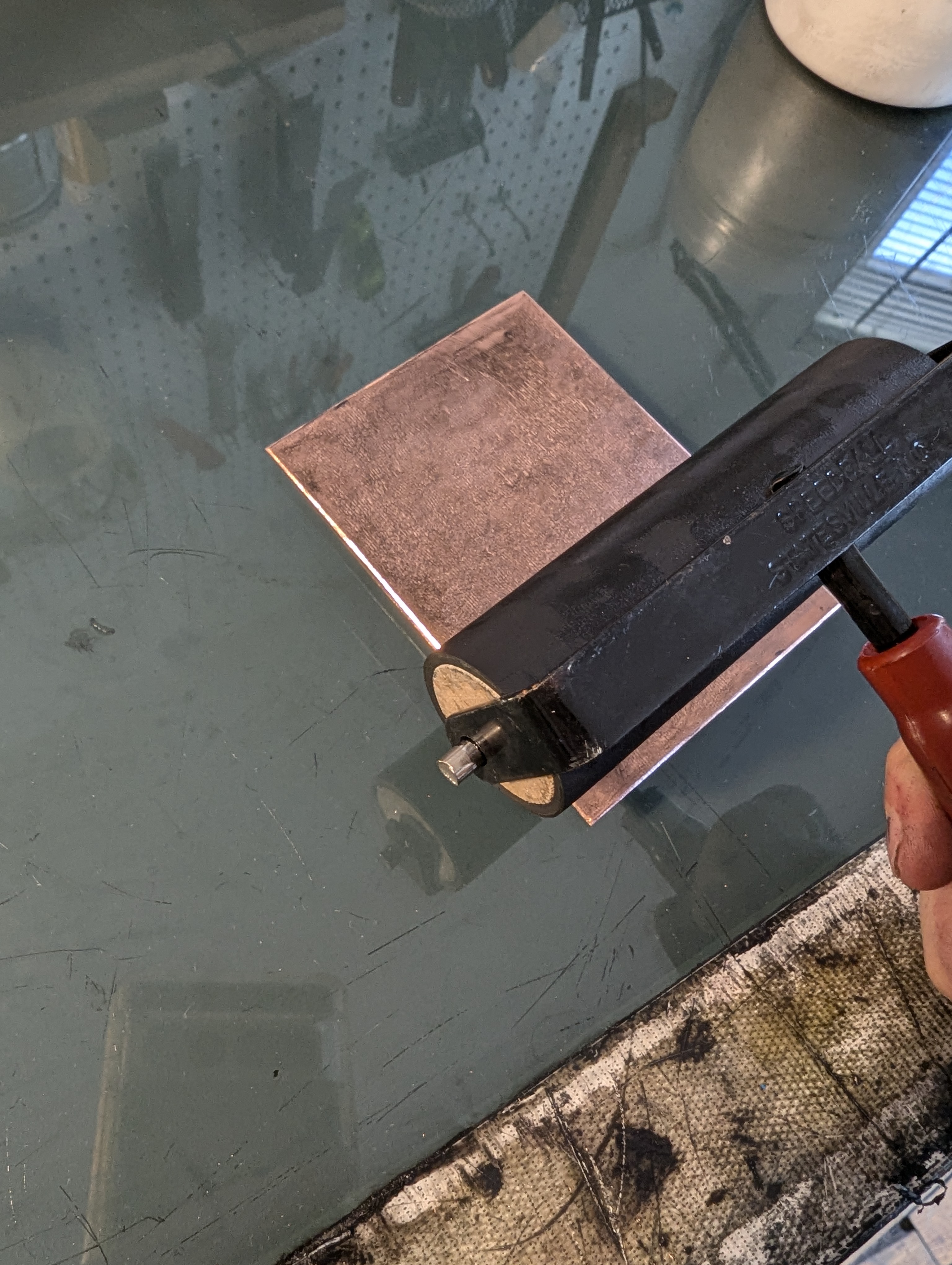Petroleum Jelly Stop-Out: the softest ground
Scroll down for a recipe of petroleum jelly + ink that you can use in place of asphaltum or as a softground. Petroleum jelly makes an excellent acid resist. It works on its own as a stop-out, but the addition of ink makes it easier to see and reduces viscosity.
Benefits:
-It will thoroughly protect any surface it touches from etching, even when applied in a very thin layer.
-Unlike asphaltum, one need not wait for it to dry and it is non-toxic. For this reason I like to use it when I am impatiently trying to stop out multi-step etches.
-It can be applied with fingers/brush without any fumes/it washes off much more easily.
-For more painterly effects, it can be melted and painted on.
-It can also be stamped on for the imprinting of textures, and used for the same textural effects you’d acheive with any other soft ground.
Drawbacks:
-It never hardens to the touch, and therefore can track a huge mess around.
-It has a bit of a ‘creep,’ meaning it tends to spread (especially on a rosined plate).
-In general it is neither crisp nor precise in the way that asphaltum can be.
Petroleum Jelly Stop-Out Recipe
Ingredients:
-3 parts petroleum jelly
-1 part black oil-based printmaking ink
-cheesecloth/tarlatan (for straining)
note: In this example I’ve used Gamblin’s Relief Portland black. As a general rule, this recipe works best with an ink that is stiff and highly pigmented. Any stiff litho black would be even better than a relief ink.
Instructions:
In a double boiler, melt the jelly. Stir ink into melted jelly until it is thoroughly incorporated. In all likelihood you’ll notice that the ink is grainy/there may be some chunks resulting from dried bits of ink. Once the ink has dissolved into the jelly as much as it will go, sieve the hot mixture through a cheesecloth into the storage container.



Example of it in action:



